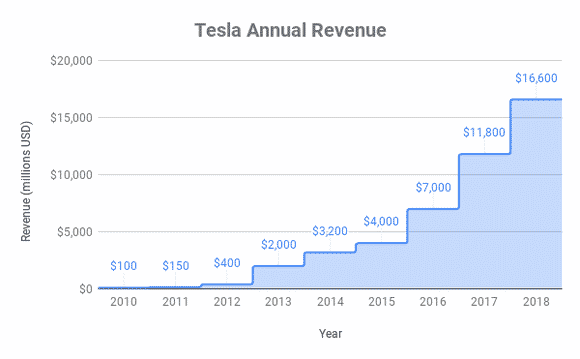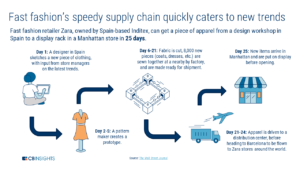Ivalua Named A Leader In The 2025 Gartner Magic Quadrant™ For Source-To-Pay Suites Report
View Report
Ivalua Named A Leader In The 2025 Gartner Magic Quadrant™ For Source-To-Pay Suites Report
View Report
Blog »

The need for organisations to move quickly to protect and grow their business is not new, but through the last decade, the risks for those who don’t have grown.
Think about all those retailers who no doubt thought they would eventually develop a decent online offering – but there was no rush, was there? Or the automotive firms, who watched Tesla with the condescending view that electric cars would just be a fad, until they also realised the true potential. Or certain food businesses who are currently looking at the growth of vegetarian and vegan food products and thinking “that too will pass” (I don’t think it will, personally).

This imperative to move quickly has become more critical in part because of technology. Competitors or new market entrants can use it to attack you these days – you don’t need a chain of retail shops on the high street, just a good idea, a great website and an outsourced logistics operation. So the need for businesses to act with speed and agility has never been greater. And even in governments, there is a growing cadre of public servants who see opportunities being presented by digital technology and are looking to drive dramatic change. In the UK, we recently had the Prime Minister’s top adviser, Dominic Cummings, talking about the need for “weirdos and misfits with odd skills” to shake things up.
For the vast majority of organisations, suppliers must play their part when it comes to agile business and speed to market. No organisation does everything itself, and whether we’re looking at buying raw materials, components, innovative technology, or sourcing the best in marketing or professional services, the whole process of engaging and working with suppliers must reflect this need for speed and agility.
Retail and tech expert Greg Petro says that, “while the supply chain moves at a snail’s pace, the consumer is moving at the speed of light… the “see now, buy now” economy is here to stay”. Zara can have similar clothing in its shops just two weeks after a new design idea has appeared on the catwalk. That requires extraordinary work internally and co-ordination with key suppliers. One major consumer goods business has a corporate objective that 50% of their sales in any given year should come from products that are three years old or less (because they know others will copy their products). The related objective for that firm is that no less than 70% of those new products should come from supplier-generated ideas.

What does this mean for Procurement and supplier management? Crucially, it suggests that the dominant model of supplier engagement needs to be collaborative rather than adversarial in nature, at least for key strategic suppliers. If you want a supplier to work quickly, to provide their best ideas, people or products to support your business, they won’t be responsive if for the last three years you only communicated to beat them up on price or criticise their delivery performance.
In a recent piece of research from Ivalua, (“It’s not all about the money – Why moving beyond cost can help organisations unleash supplier-led innovation”), two-thirds of UK businesses agreed that innovation was being blocked as a result of a focus on cost reduction. Now there is a time and a place for price negotiation of course, but if you are an organisation where speed, innovation and agility is really important, key suppliers who play essential roles need to be handled differently.
However, supplier collaboration is much easier to talk about than implement. It requires appropriate inter-personal and behavioural skills, as well as traditional skills such as commercial understanding and negotiation. Working collaboratively is often complex, involving internal stakeholders beyond the Procurement function too, which highlights another critical success factor – the need for effective programme and project management. That’s not something many Procurement professionals traditionally consider.
Project management means managing against robust plans, laying out deliverables, resources, costs, risks and so on. It means everyone involved understanding their role, and what they need to do as part of the bigger picture. It is a very different approach to the individual Procurement executive disappearing into a (metaphorical) darkened room on their own to write that category strategy or run a tendering process!
But the good news is that we are seeing some Procurement technology platforms (including Ivalua) getting to grips with the need for a structured approach to management of collaborative opportunities. Software can improve visibility and management of initiatives, by supporting project management, reporting and tracking of progress, activities and benefits, and sharing information both internally and into the supplier side to enable “collaboration at scale”. Such tools won’t in themselves guarantee success, but they can certainly help, as we enter what may well end up being seen as the “decade of collaboration” for the Procurement profession.
(Peter Smith will be discussing supplier collaboration at an Ivalua event on the evening of February 26th in London – see more details here if you are interested in attending).